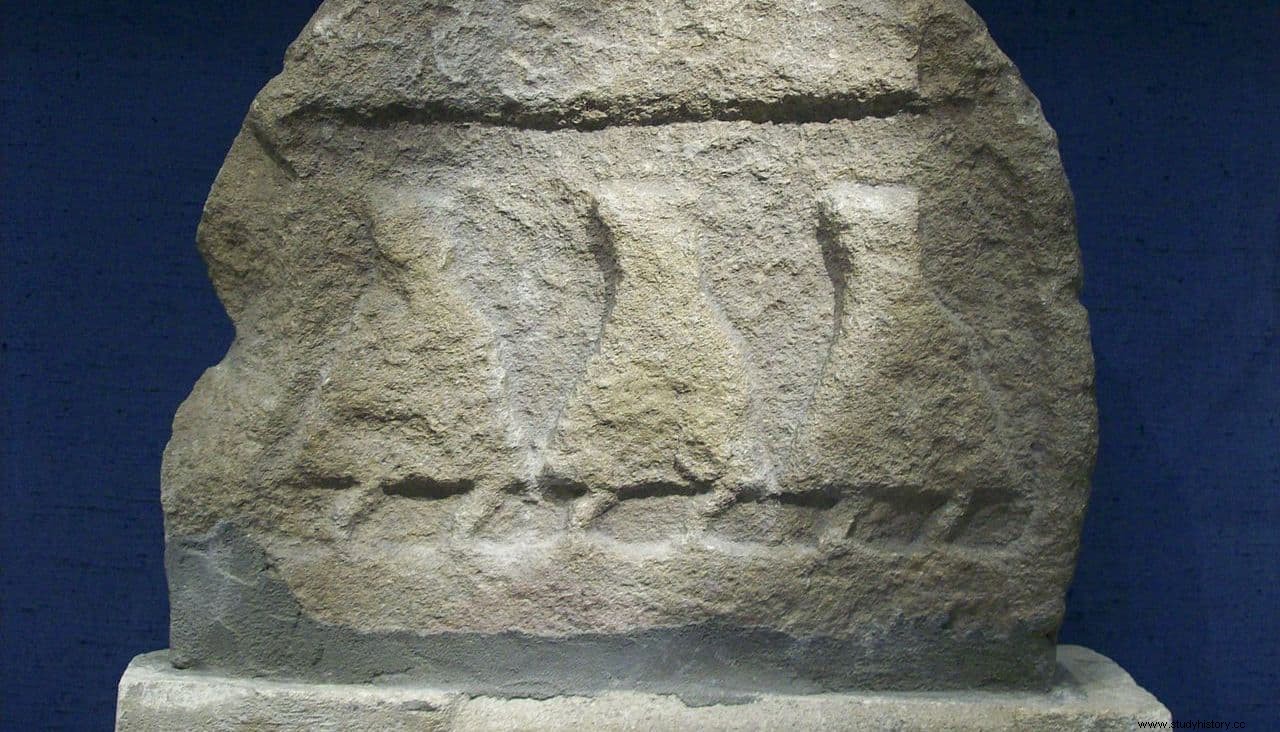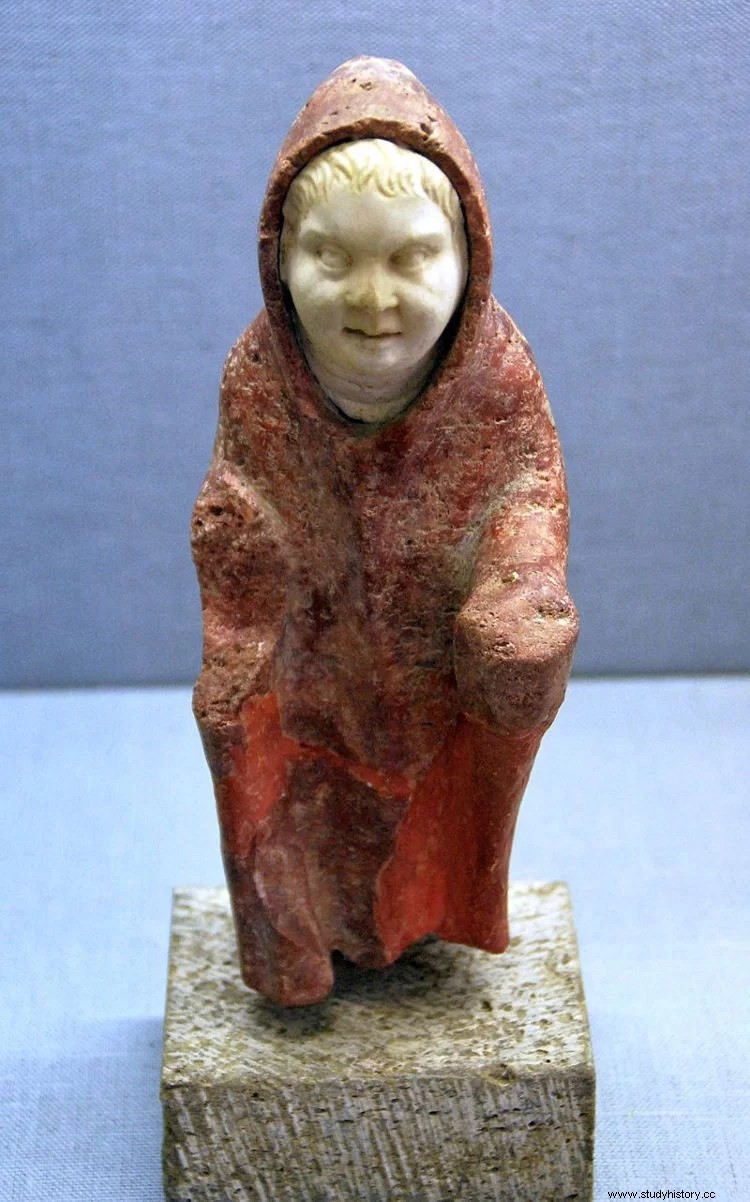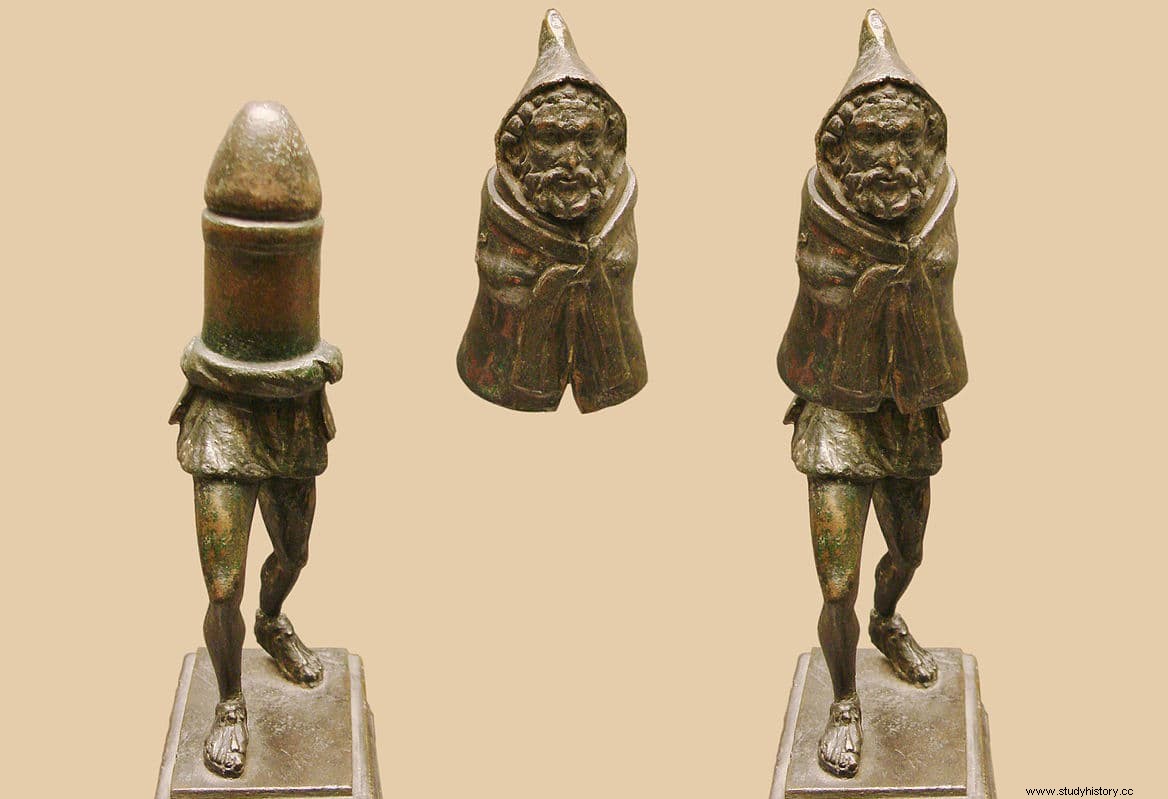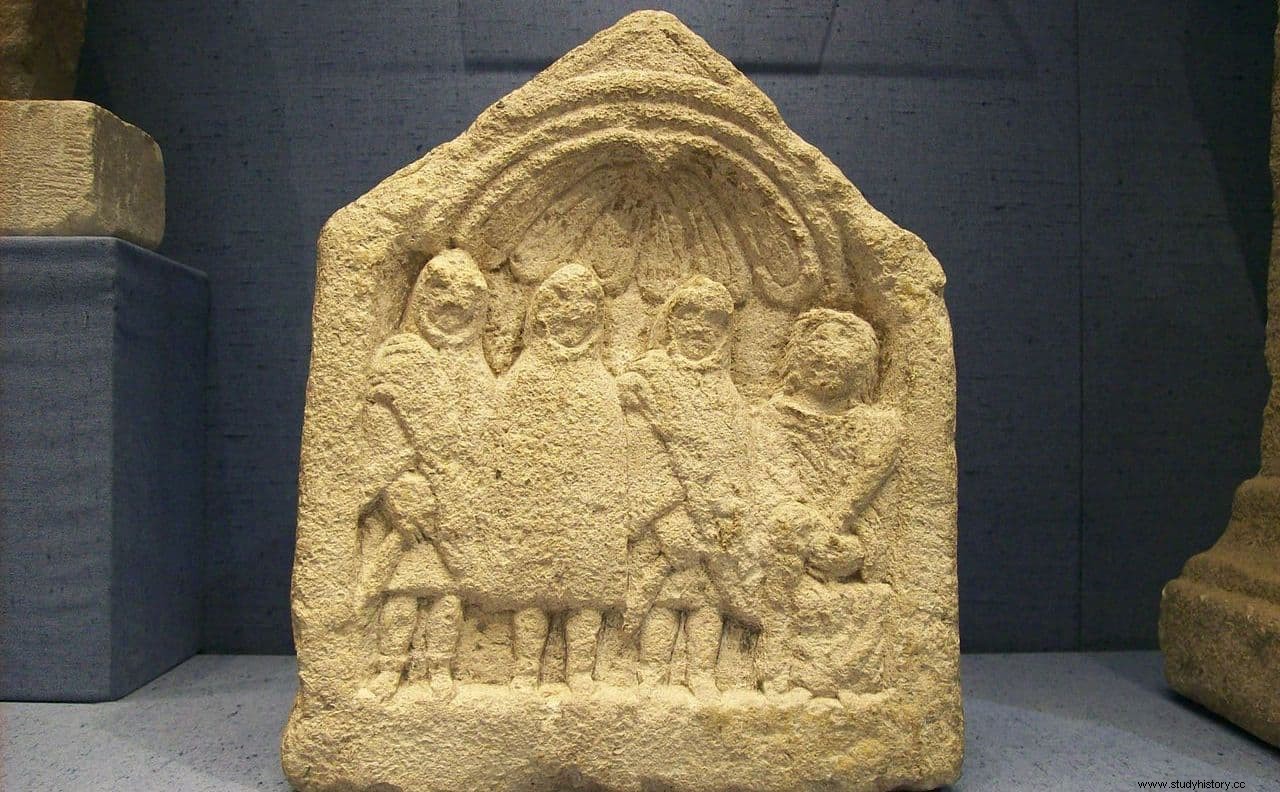Goblins, gnomes and dwarfs are characters that are part of the mythology of many places, both in Spain (the trasgu Asturian, the trastolillo Cantabrian, the iratxo Basque, the follet Catalan…) as in Europe (the lutin french, the leprechaun Irish, the domovoi Slavic, the mazapgul Italian…). The fact that their appearance is similar in most of these cases (small size, mischievous or mocking character, hooded head) leads to speculation of a possible common origin or cultural transfer. The truth is that this aspect seems to go back, at least, to Ancient Rome; to the genii cucullati , specifically.
Actually, there are similar characters all over the world, in the case of the alux maya, the cipitio Central American, the momoy Venezuelan, the abura-sumashi Japanese, the mogwai chinese etc. But its physical appearance is already more varied, thus differentiating itself from that old model which, in turn, was imported from Celtic folklore; We already know that the Romans accepted foreign cults and divinities without any problem.
Genus cucullatus means genius or hooded spirit, a name that is due to the fact that it was represented covered by a hood (cucullus , In latin). To be exact, not only with her but with bardocucullus , a kind of short cloak with a hood that the Gauls used and that the legionnaires adopted, later also extending to the civilian population.

This garment did not spread early but sometime between the 1st and 2nd centuries AD, as contact between barbarians and Romans became more common. It was made of thick wool or leather, without sleeves (or ones up to the elbow), and wrapped tightly around the wearer, usually covering up to the waist, although it had a longer version, the collobium or cogulla, which would later become the monastic habit. There was also the paénula , a kind of lighter and looser poncho but also hooded. One and the other began as good options to cover themselves from inclement weather by the lower strata of society, such as slaves, peasants or soldiers; Later, from the 3rd century AD, the wealthy classes also used them, mainly in winter and during trips, considering them more practical than the classic toga.
If Rome took the bardocucullus of the Gauls -some authors, on the other hand, consider it their own creation-, this means that it was probably a common garment in all Celtic cultures, given that they had many common elements among them. In fact, representations of cuculli have not only been found in Italy and France but also in places as diverse as Great Britain, Germany (Rhineland), Austria (Carinthia), Switzerland, etc. There are those who are even more specific and point to the Lingones, a tribe that, coming from the headwaters of the Seine and Marne rivers, crossed the Alps and around 400 B.C. settled in the valley of the Po, being romanized later and forming part of the legions destined for Britannia.

What interests us here is the association of the cucullus with the genii cucullati , which has configured a whole characteristic iconography. It consists of figures, generally in sculpture or relief (statuettes, steles, lanterns, pendants...), represented wearing that garment, which is interpreted in a religious sense.
It is not clear if they all claim to be that type of character, although it is considered this way due to the discovery of two altars in the temple of Wabelsdorf, in the aforementioned Austrian state of Carinthia, which bear the inscription "Genus cucullatus", extrapolating to the other pieces. found.
It should be said that in Britain they appear in the form of a triad while in Rome they are assimilated with Telesforo, the son of Aesculapius (god of medicine), who symbolized those who had managed to heal from an illness. Telesforo, whose cult was surely born towards the end of the 1st century AD. in Pergamum (where there was great devotion to his father) and spread to the Danube, he was represented as a dwarf covered with cucullus or sometimes with pilleus (the typical Phrygian cap). However, Telesphorus is believed to have been a Celtic god brought to that region of Anatolia by the Galatians in the 3rd century BC. It would be there where he was linked with Aesculapius, passing to the Roman Empire during the mandate of Hadrian, in the second century AD.
Now, one thing is that the Genus cucullatum be a religious character and another that we know exactly in what sense, since there are no inscriptions or documentation that explicitly refer to it. That is why there are many interpretations based on the different iconographic elements that they present. Thus, a similarity has been seen between the hood and the phallic statuettes so abundant in Roman art:the fascinum , used as an amulet against the evil eye. In fact, some have been found in which the bardocucullus it can be removed, like a plug that hides a fascinus giant; in such a case, we would possibly be talking about a representation of Priapus instead of a genus cucullatus .
But Priapus was a god -lesser, but a god- of fertility and this is another of the interpretations attributed to these figures, since they are often shown endowed with phalluses or carry an egg in their hand (symbol of life and rebirth). ) or a scroll of parchment (metaphor for the length of life); there are also those who wield daggers. The relationship of all this with health -and, therefore, with Telesforo- is reinforced by the fact that many genii cucullati they appeared near wells and springs, the waters of which were considered to have healing properties (not only in ancient times but also in the Middle Ages). Warding off disease and death, as well as protecting newborns, would thus be obvious uses.

This regenerative capacity is also related to other characters that sometimes accompany or complement them:the matronae , female deities originating from northern Europe and highly revered among the Celtic peoples of Gaul, Britannia, Germania, northern Italy and part of Hispania. They can stand alone, but are sometimes associated with the genii -often a woman accompanied by two or three men-, being again the legionnaires who introduced them in Rome. Three is once again the key number; let us remember that many geni cucullati appear grouped in triads -with matrona or without it- and some authors believe that each figure plays a different role, differentiated by size and appearance.
In this sense, it is inevitable to review the theory of proto-Indo-European trifunctionality, enunciated by the philosopher Count de Gobineau and the philologist Georges Dumézil, according to which the peoples of the Copper Age and early Bronze who arrived in Europe from the northeast of the Sea Negro had tripartite mental schemes in all areas (psychological, ideological, social and political).
From this would derive the division of society into three classes, of religion into three functions (magic-justice, strength-victory-wisdom and peace-beauty-prosperity-love), of social life into authority-war-productivity, etc. . Although it can be opposed to them that the triads also appear in other geographical and historical contexts, such as Ancient Egypt.

Another amusing possibility, pointed out by the English historian Guy de la Bédoyère, a specialist in the history of Roman Britain, is that the iconography of the genii cuculllati This is not a far-fetched interpretation but the mere fact that it is easier to sculpt an anthropomorphic figure covered in a cape from head to toe than to do it with legs and arms. There it is.
